

Table of contents
- variety selection
- planting time
- winter preparation
- Frost protection optional
- Causes of frost damage
- Horned violets in the tub
- Beware of winter wet
So that the horned violets survive the frost unscathed, the time of planting is important. The flowers must have sufficient time to take root in the soil. Only hybrid breeds that tolerate low temperatures are hardy.
variety selection
There are different types on the market, which are referred to as horned violets. Basically, Viola cornuta and Viola wittrockiana are suitable for overwintering. Both species even prefer cooler temperatures and are frost hardy down to -15°C. Both types are also mainly planted in autumn, so that the beds bloom luxuriantly in spring.
There are now some breeds that have proven to be particularly frost-resistant. They are often sold commercially as "mini winter violets". So far, there are the following varieties that are particularly frost-resistant:
- Ice Babies
- Ice teens
A notice:
Whether planted in the fall or early spring, the flowers are usually replaced in the summer, when they will hardly bloom or, once seeded, will die.
planting time
Regardless of the variety is the right time to plant. Planting in September or October is ideal. If you cannot use this time window, February or March is also an option to plant the flowers. However, if you want to plant in early spring, make sure you take advantage of a prolonged warm period. It should be warm for at least a week to give the plants ample time to root in the soil.

winter preparation
A little winter preparation helps the plants through the cold season. With the right winter preparation, the plants save energy and are less susceptible to frost.
Tips for winter preparation:
- Remove flowers and buds
- remove dead leaves and shoots
- Work in one tablespoon of horn shavings per plant
- Distribute potash fertilizer generously
The potash fertilizer does not promote growth, but promotes the formation of a strong plant epidermis. As a result, the plants are not as susceptible to frost. Avoid heavy nitrogen fertilization as this would lead to increased shoot formation that is not frost resistant. The plants would then freeze back severely and may even die off completely.
A notice:
If you plant the flowers in fresh potting soil, you can completely do without horn shavings. The substrate already has a basic fertilization.
Frost protection optional
Horned violets do not need winter protection, but at very low temperatures it is advisable to protect the plants. It is sufficient if the flowers are loosely covered. For protection you can use both natural materials and winter protection from the trade.
Suitable winter protection:
- leaves
- fir branches
- winter fleece
A notice:
Do not use walnut leaves or spruce branches. The falling needles the foliage can change the soil pH, making the substrate too acidic for the plants.
Clear away the winter protection in good time. Mid-March is ideal, otherwise the ground cannot warm up in time. This would mean that the flowers sprout and bloom late.
Causes of frost damage
Above all, the so-called frost can become a problem for the flowers. Plants that are not yet covered with snow and have been exposed to severe frost are at risk of dying off entirely. At very low temperatures it is therefore advisable to cover the flowers.
If it snowed in winter, you can also spread a thick layer of snow loosely over the plants. A thick wall of snow takes longer to melt and the flowers are very well protected underneath. The soil also stays moist longer, which reduces the risk of drought in winter.
A notice:
When wintering outdoors, the water requirements of the plants are often underestimated. Frost-free periods should always be used to water the plants sufficiently, even in beds.
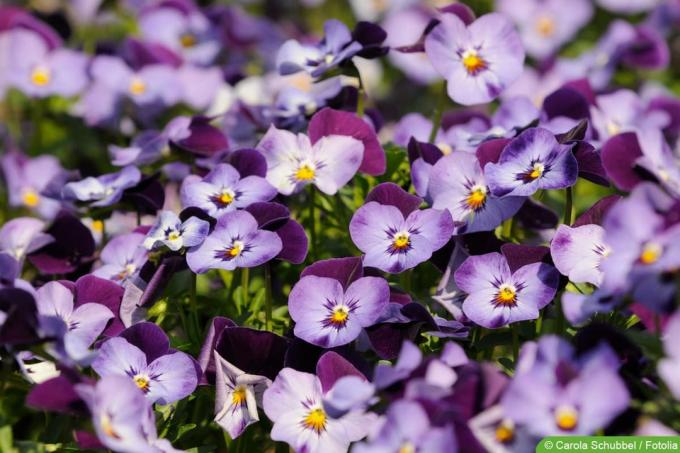
Horned violets in the tub
Horned violets in tubs have a special place in winter. Although they are also frost-resistant, due to the way they are planted, the root ball is in danger of being damaged by the frost. In the cold season, the plants lack the warmth of the ground.
Plants in tubs should therefore be overwintered appropriately. One option is to put them in an unheated greenhouse. You can also protect the plants with a winter fleece. Alternatively, you can simply bury the buckets in the ground. Make sure that the soil in the planter is flush with the ground.
Beware of winter wet
Another problem with horned violets in the tub is winter wetness. Although it is important to water during frost-free periods, it can happen that the plants are too damp, especially when the thaw begins. In this case, the roots can rot and the plants die.
To prevent this from happening, you should plant the flowers correctly:
- Pot must have at least one drainage hole
- The bottom layer forms a drainage made of expanded clay or lava granules
- Mix substrate to 1/3 with expanded clay or lava granules
Also, be sure to remove excess water during the winter months. In addition to the time after watering, you should also check the coasters if there is a longer frost-free period. The condensation water can collect in the saucer and also promote rot.
 Home editorial office
Home editorial office
Learn more about overwintering plants

Is the dragon tree hardy? 7 tips for wintering
Dracaena, the botanical name of the dragon tree, is not just coincidentally reminiscent of a palm tree. Like the palm trees, it also likes it warm and sunny. He is not hardy and has to hibernate in the house. Here are some tips.

Are asters hardy? 5 tips for wintering
The summer aster and the autumn aster not only differ in their flowering time. When winter arrives, another difference becomes apparent: one dies, the other survives the frost.
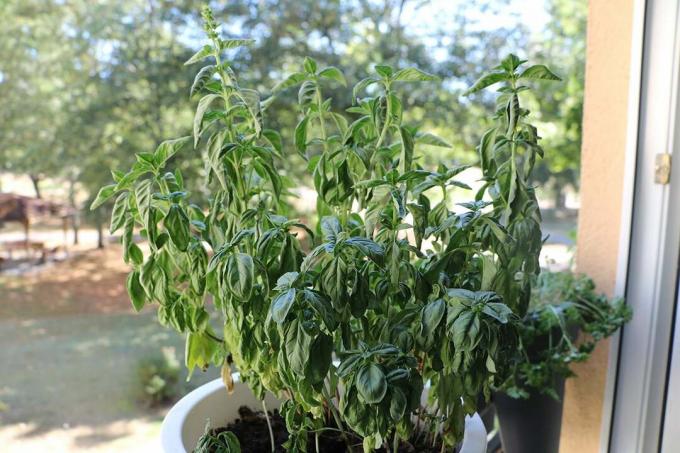
Overwintering basil: 7 tips for caring for it in winter
If you want to enjoy fresh basil in winter, you can overwinter it with a little skill. With these 7 tips you will definitely succeed!
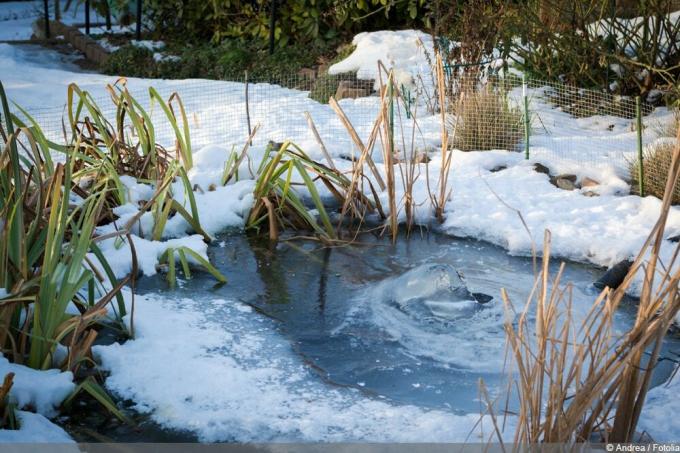
Overwintering pond plants | Aquatic plants in winter
The garden pond is an important design element in the garden for many hobby gardeners. With the right pond plants, it draws everyone's attention. The numerous species differ in their appearance, their planting location on or in the pond and, last but not least, their winter hardiness.
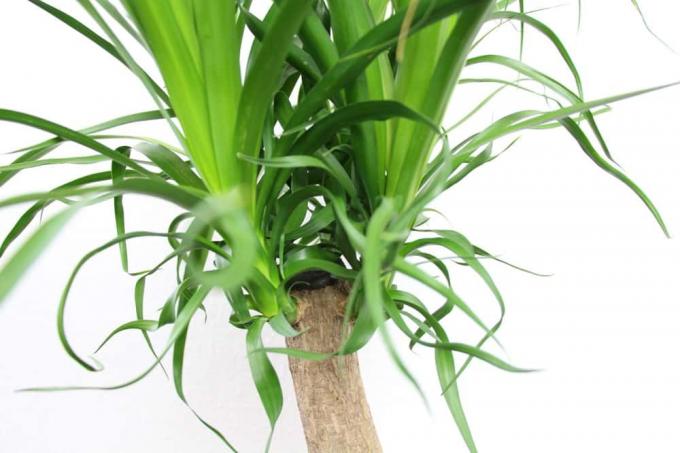
Overwintering Yucca Palm - Is It Hardy?
Although yucca palms are indoor plants, they like to be outdoors in the summer. However, most species are not hardy. It is necessary to winter them indoors. You can find out how to do this here.
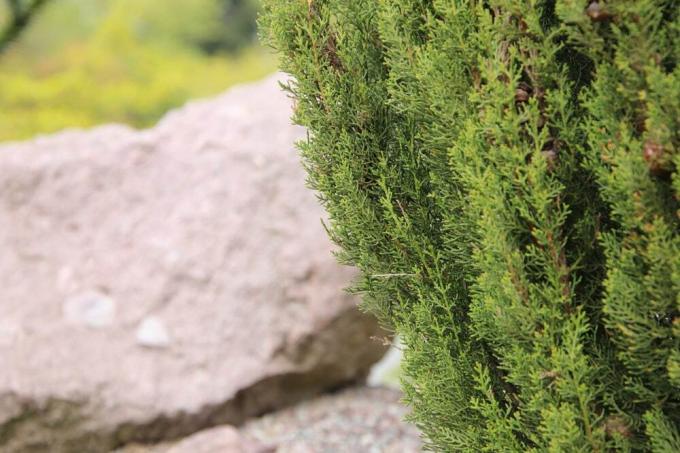
Is the cypress hardy? | 5 tips for wintering
The cypress can be a decorative addition to the garden and can also be used as a privacy screen. In order to overwinter them properly, however, a few points must be observed. Because the Mediterranean plants are only hardy under the right conditions.



